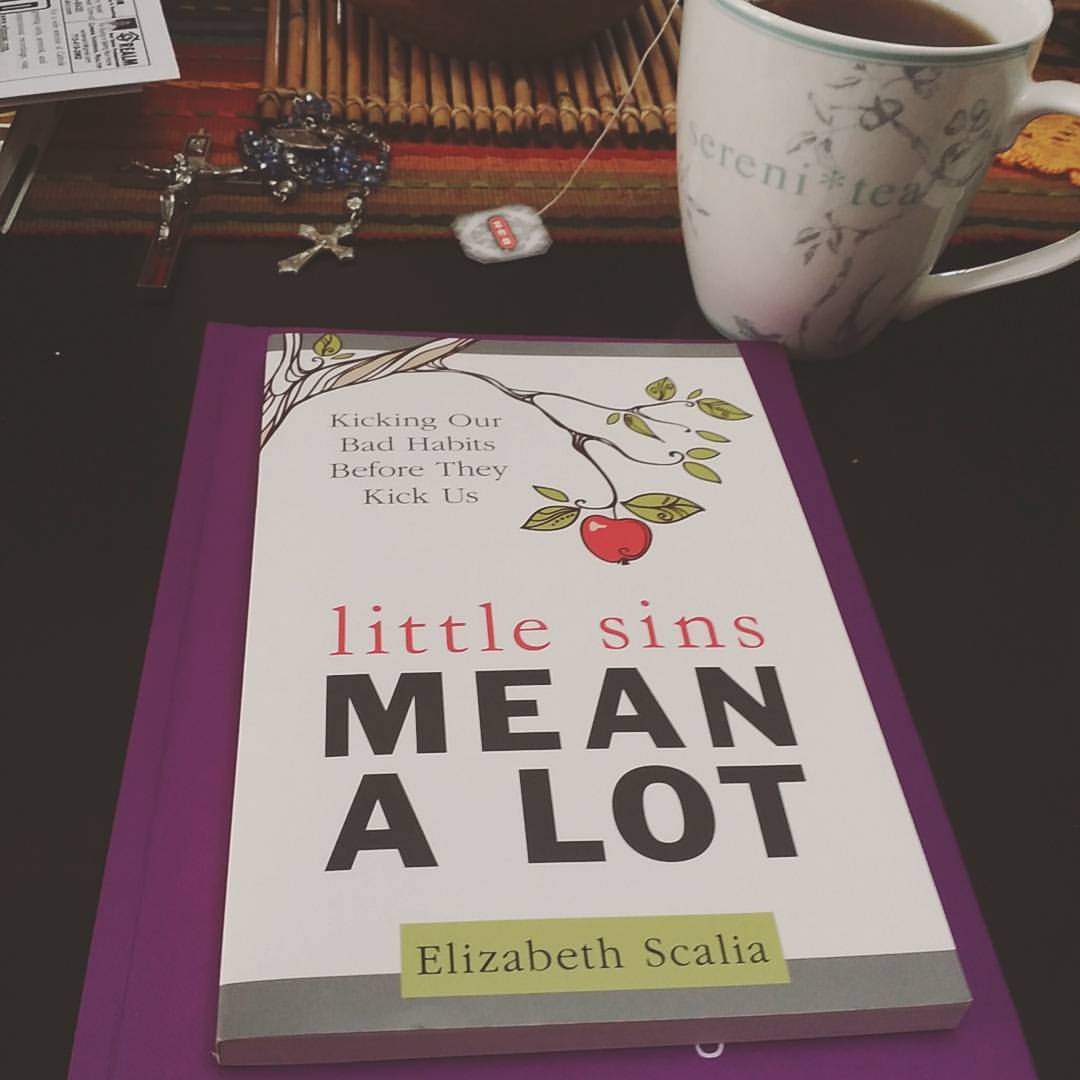Yesterday, I featured my friend and fellow Patheos Catholic blogger Leah Libresco on my Women of Christ Wednesday segment. One perk about working for this site: Free books. I read through Arriving at Amen in about a week’s worth of time. I cringed at the math metaphors used throughout. Being the Former English Major that I am, I am highly allergic to math. Yes, I did well in my high school Algebra and AP Statistics classes, but I still hate math with every fiber of my being. However, Leah balances out the math metaphors with references to musicals, dance classes, and learning languages, which definitely appealed to me. Overall, reading this book put a whole new perspective on the prayers that I grew up with. I’m gonna do a chapter-by-chapter summary, comparing my perspectives on the prayers Leah offered in this book to Leah’s own prayer journey.
Introduction
I was surprised to read that the very atheist Leah was drawn to Javert in Les Miserables given how holier-than-thou he acted. When I watched the 10th Anniversary Concert of Les Miserables, I fell in love with Eponine, who I still feel sings to my very soul. But at the time, Leah was operating on the idea that moral laws can exist without God. Given that I was very much an honor hound back in my adolescent years, I could understand why the similarly honor-hounding Leah would love a character who made duty an idol, even at the expense of his own life. Eventually, however, Leah came across one flaw in her personal philosophy: the development of a moral conscience. Using proof of contradiction, Leah realized that there was a gap between the morality that she wanted the world to have and the philosophy she had come to live and breathe by.
Petition
I’ll admit that petitionary prayers are sort of my go-to prayers. I memorized the basics of my childhood, but being the writer I am, most of my prayers are created from the top of my head. Leah saw petition prayers as “tattling” until her boyfriend at the time gave her a different perspective: that it’s hard for the antagonists of your life to be angry because it takes away from them being happy. Leah started to imagine that there was a better version of “Madison” and chose to direct her prayer towards healing the breach, healing the anger and fear that existed between her and her antagonist.
I also loved that she prayed for fictional characters. It gives 2013 me something to smile about, given that I prayed for Lydia Bennet to be okay after Wickham wrecked her in The Lizzie Bennet Diaries. I also loved that she relates more to fictional characters than real people and eventually learned to pray for anyone who may be struggling with the same problems those fictional characters have.
She also learns about the blessings of intercessory prayer as a way of connecting to others and how asking for a saint’s intercession helps to remind her that she is not alone. The chapter ends with a humble admission that introduces Leah’s relationship with the Blessed Mother. Like me, Leah has dry periods, but we both pray (to put things in Jesuit terms) for the desire to have the desire. And sometimes, that’s enough.
Confession
I love the sacrament of Confession. If it were up to me, I’d go more often than just once a month. Like many people, Leah initially believed that if she talks about going to Confession with people, they would wonder “What did she do that she needs to confess?” She also initially put off confessions which ended up making things worse. She also admits that a lot of her sins, like mine, are inward ones. Confession behooves both of us to be more specific in knowing our sins.
She also points out two cognitive biases that tend to keep people away from confession: the sunk-cost fallacy and loss aversion, which basically boils down to being blind to your mistakes to avoid the short-term pain and dealing with the consequences of not getting what you used to have back. But the sin isn’t being repeated just because we acknowledge its existence. We all tend to minimalize how bad our sins can be, but in the end, we have to own up to our responsibilities no matter how much they hurt. I also love how Leah describes the beauty of the brokenness that comes from going to Confession and the nature of the church as a whole. And in the end, Confession helps us unite ourselves to Christ.
Examen
Note to self: Find Timothy Gallagher’s The Examen Prayer: Ignatian Wisdom for Our Lives Today. I used to do the examen in this order: I would think about the day, then write about what went wrong, what I could improve on, and end with gratitude. I have recently switched things to the order that Leah puts in this book. She also talks about discerning and imitating virtues in the examen and seeing how she can better serve others. I hope to apply these perspectives in my own examen journal.
Rosary
I learned how to pray the Rosary as early as second grade. My teacher was a nun and I remember a few things. Mostly: Don’t play Cat’s Cradle or Chinese Jump Rope with it and don’t wear the Rosary as a necklace. I stopped praying the Rosary sometime during my desert period and relearned it in college. I gained a real appreciation for the Rosary in my college days and I love Leah’s perspectives in this chapter. Like me, she tended to hold grudges and imagined the antagonists in her life to be outright villains. But praying the Hail Mary helped her learn how to be more charitable. She uses ballroom dancing as the metaphor for improving on how she prayed the Rosary, which I loved.
She starts with the Sorrowful mysteries, in which she places herself in an outsider perspective. In the Joyful Mysteries, Leah places herself as someone playing a supporting role, such as Elizabeth or Joseph. She notices in these mysteries that God’s grace expands as the mysteries progress. Leah found it hard to meditate on the Glorious Mysteries at first, so she imagined the places and the direction that the mysteries took place in, eventually leading her to follow Mary to Heaven. With the Luminous Mysteries, Leah meditates on how Jesus establishes the sacraments, transfiguring and elevating the ordinary into the extraordinary.
Divine Office
In spite of my Cradle Catholic upbringing, I only learned about the Liturgy of the Hours in recent years. My online friends and I used to do video conferences and pray the Compline together. This later prepared me for when I prayed the Liturgy of the Hours during vocations retreats and come and see events. I still love this particular part of the Compline: Save us, Lord, while we are awake; protect us while we sleep; that we may keep watch with Christ and rest with him in peace.
The Liturgy of the Hours gave Leah some structure to her day, even on days when she wasn’t commuting. She compares this kind of structure to computer code. Then, she goes into how the cyclic nature of the psalms connects her to her future self in a Timey Wimey Ball kind of way. She also learns that not all the psalms will relate to what she’s going through at the moment, but they do apply to someone, behooving her to pray for that person in a very emphatic way.
Lectio Divina
Like the Liturgy of the Hours, Lectio Divina is relatively new to my life. I’m still trying to figure out how to do it properly and make it part of my daily prayer. This chapter gives me some help on it. My reading style is similar to Leah’s: I either devour books or analyze them as if for a research paper. I still have the perspective that the Bible has lots of advice if I could find the right quote, but that’s not always the case. Leah compares Lectio Divina to learning a new language, which for her meant immersing herself in this form of prayer.
BTW: I squeed at the Buffy shout-out towards the end of the chapter. She basically explains why I love Buffy so much when comparing it to Cabin in the Woods, which I have yet to see. (Look for a review this October.)
Mass
I’ve been going to Mass for as long as I can remember. In Catholic school, I learned about the prayers said during the Mass, but never once did I consider the Mass as a whole to be a prayer until very recently. Leah originally observed Mass as if she was doing a nature documentary. Leah continues her language metaphor in this chapter as she immersed herself into the Mass. I love her perspectives on the liturgical calendar and how she notices the change in vestments more than I did as a kid. She also uses some math metaphor to explain transubstantiation and how Mass brings Heaven and Earth into alignment. I can’t do that explanation justice, sad to say.
The book ends with Leah comparing herself to Peter, who constantly messed up in spite of his good intentions. I was surprised that Leah didn’t list Peter as one of her go-to saints, since she says in her conclusion that she adopted him as the unofficial patron saint of her prayer life. Throughout my college days, I described Peter as thus: “Open mouth, insert foot.” And yet, in this outro, I understand what motivates Peter: a love for Christ that goes beyond what he can comprehend. Peter wants an all-or-nothing relationship with Christ, which often leads him to say stuff or do things he will regret later on. Peter may be thick-headed (why do you think Jesus changed his name from Simon, which meant “listener”?), but his heart is always with Christ.
In conclusion, I highly recommend this book to newcomers to the Church and cradle Catholics alike. We can all use new perspectives on prayer. But to my fellow English majors and people with math allergies: proceed with caution. You’ll have to deal with the math metaphors in order to find the beauty of Leah’s perspectives. It’s worth it.













